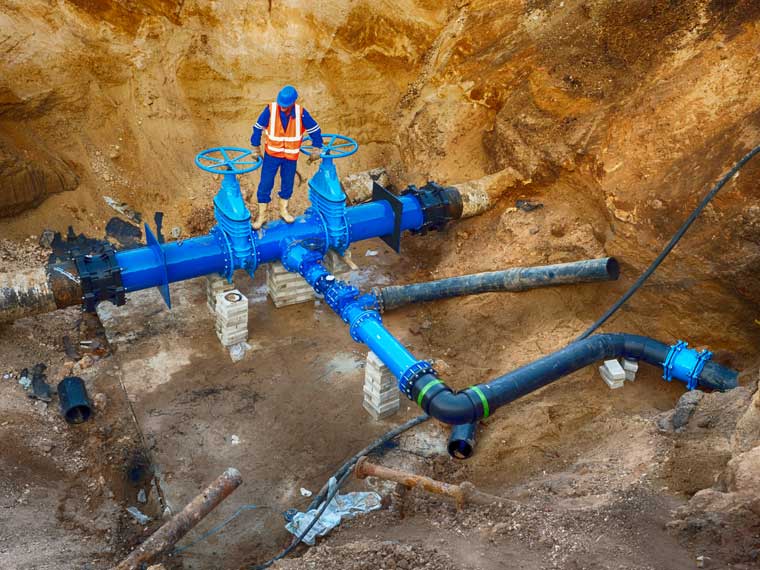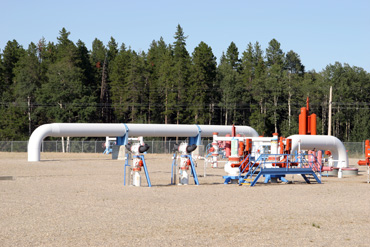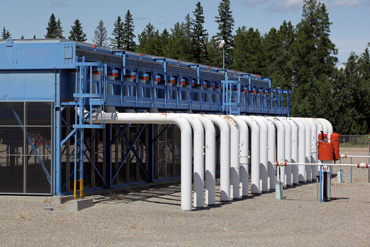ARCHIVED – Amended Safety Advisory and Draft Order on Pipeline Materials – FAQ
This page has been archived on the Web
Information identified as archived is provided for reference, research or recordkeeping purposes. It is not subject to the Government of Canada Web Standards and has not been altered or updated since it was archived. Please contact us to request a format other than those available.
- What are pipeline “fittings”?
- Where are fittings located on a pipeline system?
- Why is the NEB concerned about pipeline fittings?
- When did the NEB first take action on this issue and what did the NEB do about it?
- What is this new amended Safety Advisory and Draft Order intended to do?
- What does “standards” mean vs “company specifications”?
- Are the fittings currently in service safe if they weren’t produced according to specifications?
- Have there been any incidents on NEB-regulated pipelines related to these fittings?
- What is the Technical Workshop intended to do?
- Why did the NEB commission a Technical Paper for the Workshop?
- Does the NEB regulate the fitting manufacturers?
- Why is the NEB taking on the task of correcting this issue when it doesn’t regulate the manufacturers?
What are pipeline “fittings”?
Fittings (tees, bends and reducers) are components of a pipeline system. They can serve many purposes such as connecting sections of pipeline together, controlling the direction a product flows, changing the direction of product flowing and changing the flow rate of a product.

Where are fittings located on a pipeline system?
The majority of fittings are located above ground at gas compressor stations and liquid pump stations. These stations are typically on company property for ease of access for maintenance and repairs. In addition, all stations and pipelines have safety measures in place such as alarms, spill containment for liquids, and flares for gas releases.


Why is the NEB concerned about pipeline fittings?
All fittings are produced by manufacturers in accordance with recognized standards, such as those in the applicable Canadian Standards Association (CSA). In a few instances the manufacturing process produced fittings that did not meet appropriate specifications.
Fittings made from high strength steel and heat treated by tempering (heating the fitting to a specific temperature) and quenched (cooling the fitting in water or oil to a specific temperature) require careful process control. For example, furnace temperature, placement of the fittings in the furnace, quenching the fitting can all impact the fitting strength if not done correctly.
When did the NEB first take action on this issue and what did the NEB do about it?
In late 2015, the Transportation Safety Board of Canada (TSB) released its Pipeline Investigation Report on a 2013 gas pipeline rupture incident (P13H0107) that concluded the pipeline failure was due to the pipeline operating beyond its temperature design limits.
During the investigation TSB also noted that fittings used on that pipeline contained materials that did not meet the appropriate specifications. While these fittings were not the direct cause of the incident, they raised a red flag and the NEB began investigating the issue immediately.
On 5 February 2016 the NEB issued Safety Advisories SA 2016-01 and SA 2016-02 to provide guidance to regulated companies and the pipeline industry to address the use of materials that may not meet specifications. The NEB also issued Order MO-001-2016 that directed regulated companies to identify and report on materials, especially from two manufacturers that did not meet specifications. These reports are currently being analyzed.
What is this new amended Safety Advisory and Draft Order intended to do?
The new amended Safety Advisory expands the scope of the previous advisory by naming two additional manufacturers whose components did not meet requirements. The Draft Order requires NEB-regulated companies to:
- Verify components having material properties not meeting required specifications;
- Notify the Board within 15 days of any instance where a component does not meet specifications;
- Within 60 days of the notification the company must:
- Provide a timeline to conduct engineering assessments that demonstrate the safety of identified pipeline components not meeting the required specifications;
- Provide a timeline to revise the company’s quality assurance program, as required under section 15 of the NEB Onshore Pipeline Regulations; and,
- The company’s Accountable Officer must file a written confirmation certifying that the engineering assessments have been completed and the quality assurance program has been revised within 30 days of the engineering assessment being completed.
Canadians and regulated companies have 60 days to provide the NEB their comments on the Draft Order. After reviewing the received comments and making changes where appropriate, the NEB will finalize the Order.
What does “standards” mean vs “company specifications”?
Standards, such as those found in the Canadian Standards Association (CSA), are the minimum standard for which a pipeline or fitting can be produced and operated safely. So when a company designs, constructs, operates or abandons a pipeline or fitting, it must ensure that this is done in accordance with the applicable provisions found in:
- NEB Regulations;
- CSA Z276, if the pipeline transports liquefied natural gas;
- CSA Z341 for underground storage of hydrocarbons;
- CSA Z662, if the pipeline transports liquid or gaseous hydrocarbons; and
- CSA Z246.1 for all pipelines.
Company specifications go beyond the minimum standards found in CSA. For example, in the manufacturing of fittings, a manufacturer may be directed by a pipeline company to increase the wall thickness of a fitting or utilize a particular type of coating as additional safety measures.
Are the fittings currently in service safe if they weren’t produced according to specifications?
Prior to being put into service all fittings are subjected to rigorous testing procedures, initially by the manufacturer and again by the pipeline company. The CER’s Onshore Pipeline Regulations (OPR) section 23 requires regulated companies to conduct pressure testing on all pipe and fittings before they can be connected to a pipeline system. In all cases fittings are pressure tested to at least 25 per cent above maximum operating pressure because they are over-designed for their intended use.
If a fitting did not pass any of the necessary safety tests, it was not put into service.
Although the NEB has not identified an immediate concern with the fittings, the NEB is taking action to address the issue – in the same way that a recall notice would work on your car for example. A car part that’s recalled might only be flawed in a small number of vehicles with the rest being safe, but a manufacturer shouldn’t take that chance. They will take measures to mitigate the safety risk. This is similar to what the NEB is requiring its regulated companies to do with fittings.
Have there been any incidents on NEB-regulated pipelines related to these fittings?
No incidents have occurred on NEB-regulated pipelines that relate to the use of lower strength materials, and the NEB wants to keep it this way. The NEB is taking proactive measures to stop incidents before they happen through the amended Safety Advisory, new Draft Order and Technical Workshop on Quality Assurance for Pipeline Fittings.
What is the Technical Workshop intended to do?
The workshop’s purpose is to identify potential actions or solutions to improve quality assurance for pipeline components throughout the supply chain. Manufacturers, pipeline companies, regulators and subject matter experts will discuss specific cases to identify possible gaps in procedures, standards and regulations.
Why did the NEB commission a Technical Paper for the Workshop?
The goal of the Technical Paper is to inform the discussions at the workshop. The paper will examine the current quality assurance requirements, processes and procedures used to validate fittings on pipeline systems and identify any gaps in quality assurance practices. The Technical Paper is expected to be complete by May 2017.
Does the NEB regulate the fitting manufacturers?
No the NEB does not regulate fitting manufactures and has no jurisdiction over the manufacturing process. Manufacturers must follow the appropriate standards associations’ requirements to test, certify and verify products at various stages in the production process.
The NEB regulates pipeline companies under its jurisdiction who use fittings in their pipeline infrastructure. The Board holds pipeline operators responsible for assuring that the pipe and fittings they purchase meet the specifications required for the intended service, for example in accordance with recognized standards, such as those in the CSA. The NEB also requires its regulated companies to have a Management System and a Quality Assurance Program in place.
Why is the NEB taking on the task of correcting this issue when it doesn’t regulate the manufacturers?
While the NEB may not regulate fitting manufacturers, it can influence the existing industry standards (such as CSA Z245.11, CSA Z245.1, ASME B16.9, and MSS SP-75) to include more robust measures. The NEB has begun working with other regulators to amend the standards addressing this issue of quality assurance. The Technical Workshop will aid in that endeavor.
The NEB may issue additional guidance to operators on what changes are expected as a result of the information it receives through the workshop. In the interim, the Board expects pipeline operators to develop or enhance their own fitting specifications beyond the current standards, to ensure that the fittings they acquire and install meet material property requirements.
- Date modified:
